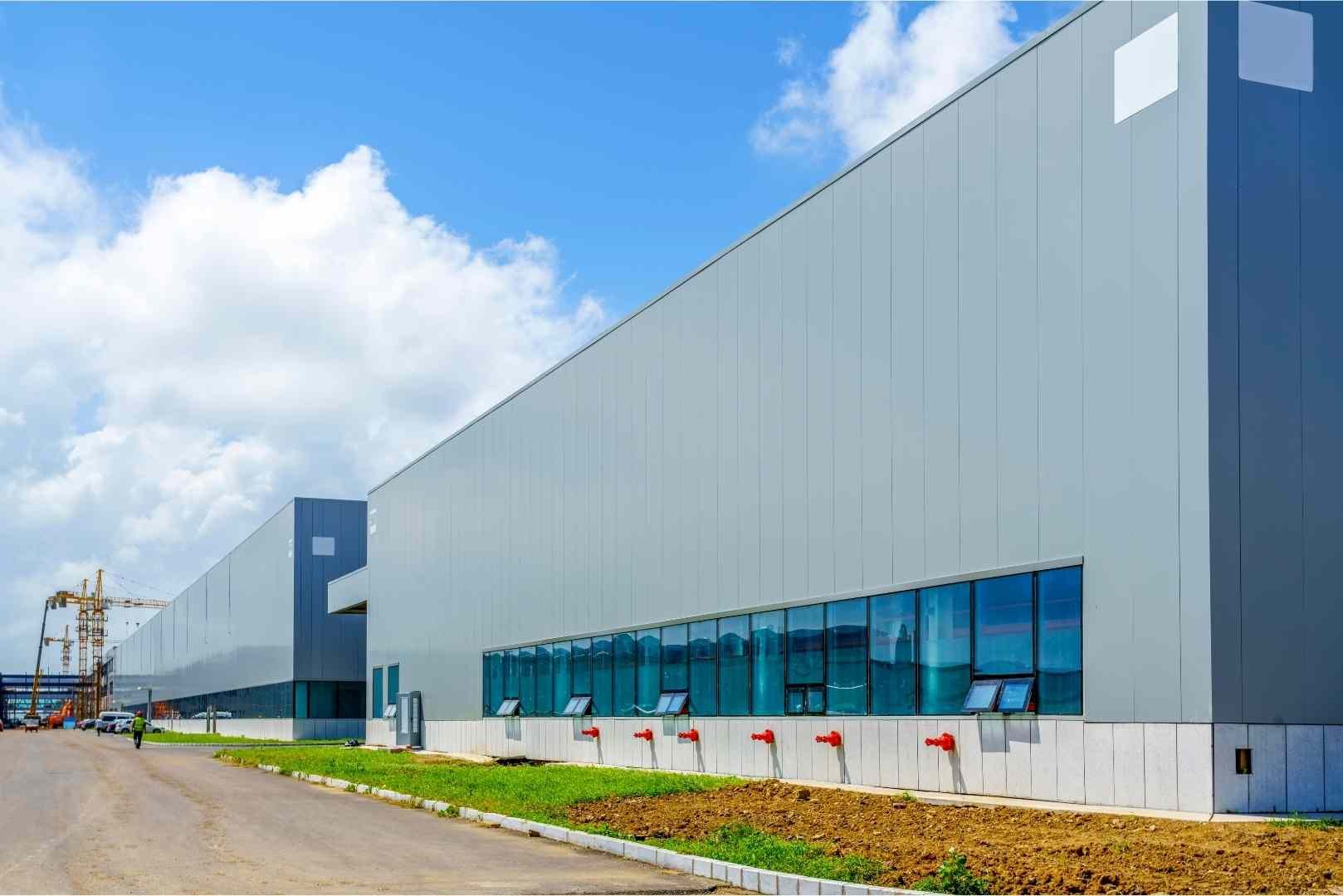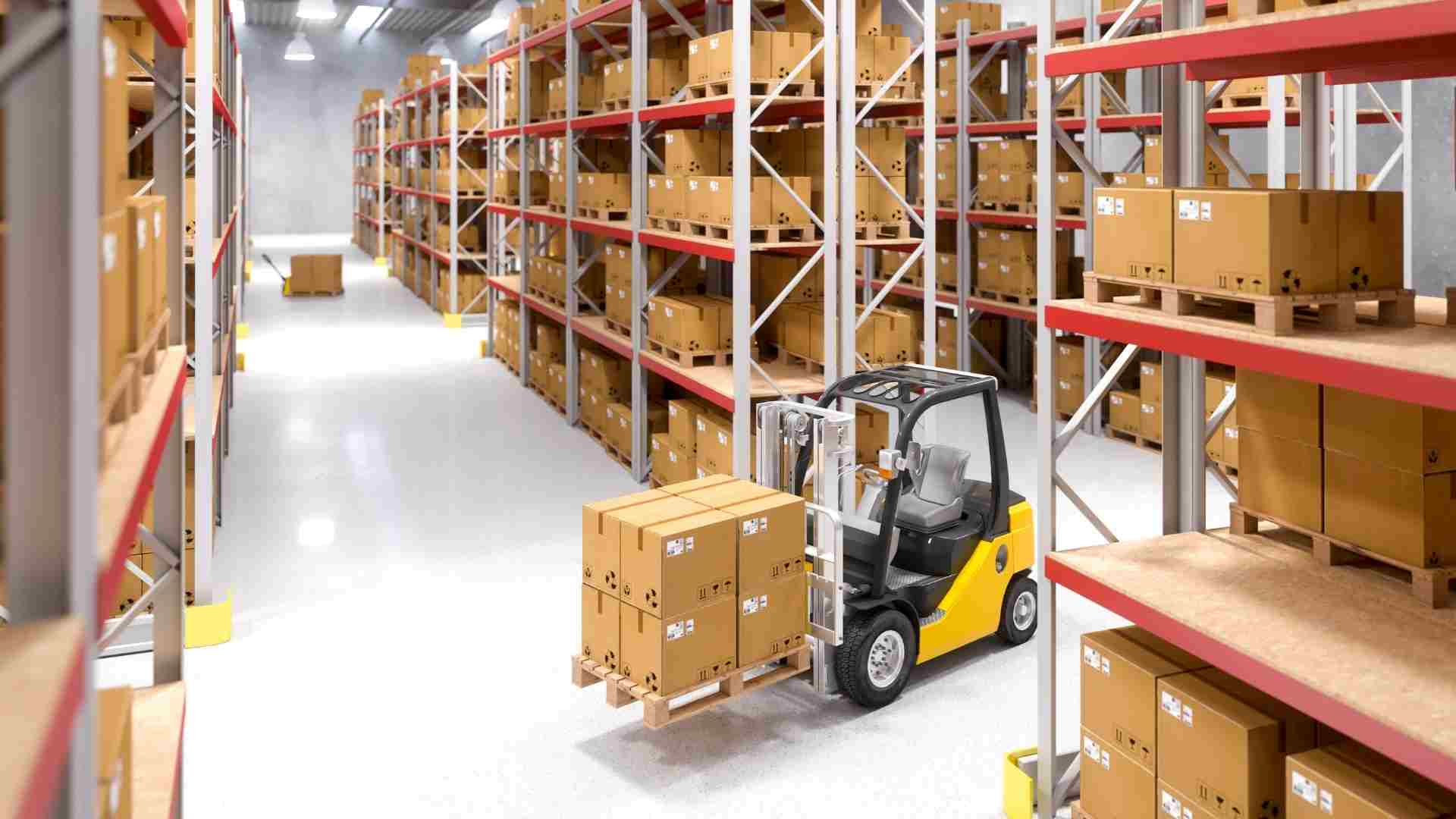If you run a product-based brand, there will (hopefully) come a time when you outgrow your current setup and need to invest in larger storage solutions.
You may need a little more usable square footage for your team to move around in on the warehouse floor, increased office space for administrative processes, or even a full-scale distribution center to organize and fulfill your customer orders.
Whatever the case may be, you’ll need to do your due diligence when searching for the ideal commercial space for your business. Commercial real estate is a notoriously tricky landscape to navigate. This means you’ll have to account for all the costs and factors that go into renting a warehouse, as well as alternative options, like working with a third-party logistics (3PL) provider.
In this article, we’ll take a closer look at warehousing costs and calculations and offer some insight into the other options you have available. Keep reading to learn more.
How much does it cost to rent a warehouse?

Most of the time when you’re renting warehouse space, you’ll pay according to how much square footage you use. While this isn’t always the case, it’s a pretty solid rule of thumb for commercial leases. But before you sign any contracts, you’ll need to figure out exactly what your storage needs are.
For example, do you have palletized products that can be stacked one on top of another? Or does your inventory come in different shapes and sizes? Answering these sorts of questions will help determine the amount of horizontal and vertical space your brand needs. Remember that in warehousing, square footage of the space is only one dimension determining how much inventory you can store; because you can store items vertically with well-designed warehouse storage systems, you need to account for the height clearances as well.
Another important consideration is where your inventory is coming from. Are your products being shipped (and received) on pallets? Then your warehouse will need to have a loading dock. Or maybe your inventory will arrive in large shipping containers? If that’s the case, you’ll need to find a warehouse that can accommodate container movement.
What’s more, if your shipments require the help of special equipment—like conveyors or cranes—then that machinery should also be represented in your space demands.
When you have an understanding of your needs and/or required warehouse logistics, you can then search for commercial real estate that checks all these boxes. But because there are so many variables that directly affect your total costs, it can be challenging to estimate warehouse pricing. For example, some spaces charge $0.85 per square foot for monthly rent, while others cost $10 per square foot per year, so lease terms may look very different between properties. The factors that influence these rates are discussed in more detail below.
Factors That Influence Warehouse Rental Costs
As we just mentioned, warehouse rental prices come with a lot of variance, which makes it difficult to provide a straightforward answer for what it costs to rent a warehouse today. Among the greatest factors impacting warehouse rental costs are square footage, base rental rate, and your brand's unique operating expenses (like triple net lease or common area maintenance).
Square Footage
It’s no surprise that square footage has a huge impact on what you’ll pay to rent a warehouse. After all, the cost to rent a storage space largely depends on the amount of room you need.
Small warehouses (those with less than 25,000 square feet) tend to be more cost-effective than bigger storage facilities. Ecommerce retailers often partner with these smaller locations since they can store their inventory without an excessive footprint.
Large warehouses (those with more than 100,000 square feet) usually boast a higher price per square foot and are most often used by importers, exporters, manufacturers, and wholesalers. Facilities with this much space are usually located in industrial areas that provide quick access to highways and loading docks.
Even if you team opt for a smaller warehouse, you can further decrease costs by optimizing the available vertical space. By maxing out your vertical storage, your company can save on horizontal square footage and reduce your total costs in a big way.
Base Rent
Base rental rate is the set rate your company pays the landlord before you add in any additional operating costs. A base rate may be charged per square foot on a monthly, quarterly, or yearly basis depending on the type of lease.
Whether your base rate is paid every month or every few months, this should be a set amount you understand and agree to prior to securing a space and officially signing a lease.
Operating Expenses
When it comes to warehouse rentals, there are two types of estimated operating expenses you’ll need to be familiar with: triple net lease and common area maintenance.
Triple Net Lease (NNN)
The acronym NNN stands for Net Net Net, more commonly known as a triple net lease. Both terms refer to the property taxes and insurance fees that commercial tenants must pay in addition to their base rent.
Put simply, you’re the one who’s responsible for all operating costs—meaning your landlord is not responsible for any expenses incurred while operating your business on their property.
Triple net lease is typically quoted per square foot, but you can expect NNN to cost exponentially more in cities like New York, Los Angeles, and San Francisco since the cost of living is so much higher in these parts of the country.
The acronym CAM stands for common area maintenance and describes the maintenance costs that are passed down from the landlord to the tenant. In short, maintenance fees encompass everything related to the management and maintenance of the commercial property, even landscaping.
These days, most lease agreements will require the tenants to pay a base rate plus either NNN or CAM during their occupancy. Keep in mind that you’ll also be paying for the electricity bill at your warehouse. This tends to be around $2 per square foot annually.
As we just mentioned, warehouse rental prices come with a lot of variance, which makes it difficult to provide a straightforward answer for what it costs to rent a warehouse today. Among the greatest factors impacting warehouse rental costs are square footage, base rate, and your brand's unique operating expenses (like triple net lease or common area maintenance).
How is warehouse leasing cost calculated?

If you’re interested in estimating warehouse costs for your own brand, we’ve broken down these calculations into three different rental options: monthly rate, quarterly rate, and annual rate.
Monthly Rental Rate
Say your company is billed monthly for a warehouse where you use 2,000 sq. ft. of storage space. Let’s also assume the following is true:
Base rate = $0.85 per square foot per month
NNN = $0.25 per square foot per month
When you add up your base rate plus NNN, you’ll find that the total asking lease rate is $1.10 per square foot per month. When you multiply that rate by your square footage, it comes to $2,200 (2,000 x $1.10 = $2,200).
In other words, your brand can expect to pay over $2,000 each month to store its inventory at this particular warehouse location.
Quarterly Rental Rate
Say your company is billed quarterly for a warehouse where you use 2,000 sq. ft. of storage space. Let’s also assume the following is true:
Base rate = $2.50 per square foot per quarter
NNN = $0.25 per square foot per quarter
When you add up your base rate plus NNN, you’ll find that the total asking lease rate is $2.75 per square foot per quarter. When you multiply that rate by your square footage, it comes to $5,500 (2,000 x $2.75 = $5,500).
In other words, your brand can expect to pay over $5,000 every three months to store its inventory at this particular warehouse location.
Annual Rental Rate
Say your company is billed annually for a warehouse where you use 2,000 sq. ft. of storage space. Let’s also assume the following is true:
Base rate = $10 per square foot per year
NNN = $0.25 per square foot per year
When you add up your base rate plus NNN, you’ll find that the total asking lease rate is $10.25 per square foot per year. When you multiply that rate by your square footage, it totals $20,500 (2,000 x $10.25 = $20,500).
In other words, your brand can expect to pay over $20,000 every 12 months to store its inventory at this particular warehouse location.
As you’ve probably already realized, annual billing gives you the lowest overall rate. So if your landlord has annual terms available, this is definitely a pricing structure you’ll want to consider if you can afford to pay this sum all at once.
Is renting a warehouse your only option?

If you’re feeling overwhelmed by all the different terms and rates for warehouse rentals, you might be curious whether renting storage space is your only option. The short answer is no—renting a warehouse is not the only way to go about storing your inventory.
While it’s certainly possible to buy your own warehouse, this type of investment isn’t going to be attainable for most ecommerce brands. The reality is, owning a warehouse means you’re responsible for maintenance and repairs throughout the entire space (which can become really expensive, really fast). And that’s without mentioning the high upfront costs for a down payment, or the necessary lines of credit to be approved for the mortgage in the first place.
For many business owners, a better alternative to renting or owning a warehouse is to work with a trusted 3PL. When you team up with a 3PL, you can actually outsource your warehousing and storage needs (so all the heavy lifting is handled on your behalf).
On top of freeing up tons of time, outsourcing to a 3PL can cut down on costs and give your company the flexibility it needs to scale well. With that said, if you do go the 3PL route, just be sure to properly vet that provider before making things official.
That is to say, look for a 3PL partner who’s equipped to support both your short-term goals and your long-term success. This means making sure they meet all your shipping and receiving requirements from end-to-end. When you take the time to thoroughly vet your 3PL, you can feel confident your inventory is in good hands and that you’re utilizing one of the most effective warehousing options out there.
Explore Extensiv’s Fulfillment Marketplace for a catalog of trusted 3PL partners who will be dedicated to helping grow your ecommerce business!
-
You’ll read about:
Be the first to know
Subscribe to our newsletter






